The Science of Hair: Understanding Your Strands for Better Care
When we think about hair, we often consider it as merely a part of our appearance—a means of expression, fashion, and style. However, the truth is that hair is a complex biological structure with a rich history of evolutionary adaptation. Understanding the science behind our hair can lead to better care and maintenance, ultimately enhancing both its health and aesthetics.
The Anatomy of Hair
At its core, hair is composed of a protein called keratin, which is also found in our skin and nails. The structure of hair can be divided into three main components:
-
The Hair Shaft: This is the visible part of the hair that extends above the skin. The hair shaft is made up of three layers:
- Cuticle: The outermost layer composed of tightly packed cells that protect the inner layers.
- Cortex: The thickest layer, containing fibrous proteins and pigment that give hair its color and strength.
- Medulla: The innermost layer, which may be absent in finer hair types.
-
The Hair Follicle: This part of the hair is embedded within the skin. It is a tiny organ that produces hair and contains various cells and structures that aid in its growth. Hair follicles are surrounded by sebaceous (oil) glands that help moisturize and protect the hair.
- The Bulb: At the base of the follicle lies the bulb, which is crucial for hair growth. The bulb contains rapidly dividing cells and is supplied with blood vessels that nourish the hair.
Hair Growth Cycle
Hair grows in cycles that consist of three main phases:
-
Anagen Phase (Growth Phase): This is the active phase of hair growth that can last from two to seven years. The length of this phase determines the maximum length of hair.
-
Catagen Phase (Transition Phase): This is a short transitional phase lasting around two to three weeks, where hair growth stops, and the hair follicle shrinks.
- Telogen Phase (Resting Phase): Lasting for approximately three months, this phase is when the hair is dormant and may eventually shed.
On average, humans shed about 50 to 100 hairs daily as part of this natural cycle, which can vary based on several factors, including genetics, health, and environmental influences.
Factors Affecting Hair Health
Understanding the science of hair involves exploring the various factors that influence its health and appearance. Here are some key considerations:
-
Genetics: The structure, thickness, and growth patterns of hair are largely determined by genetic factors passed down through generations.
-
Hormones: Hormonal changes, such as those experienced during puberty, pregnancy, or menopause, can affect hair growth and quality. Conditions such as hormonal imbalances or thyroid disorders may also lead to hair thinning or loss.
-
Diet and Nutrition: Hair requires a variety of nutrients to remain healthy. Proteins, vitamins (such as A, C, D, and E), iron, zinc, and omega-3 fatty acids play vital roles in nourishing hair follicles and supporting growth.
-
Environmental Factors: UV exposure, humidity, and pollution can damage hair, leading to dryness, breakage, and loss of color. Protective measures, such as wearing hats or using UV-protective hair products, can help mitigate these effects.
- Hair Care Practices: The way we treat our hair—through washing, styling, and heat exposure—also impacts its health. Frequent washing can strip natural oils, while excessive heat styling can weaken and destroy the hair structure. Opting for gentle shampoos, minimizing heat styling, and using conditioners can improve hair health.
Tips for Better Hair Care
Understanding the science of hair opens the door to more effective care practices. Here are some strategies to promote healthy hair:
-
Choose the Right Products: Select shampoos and conditioners suited to your hair type (oily, dry, curly, etc.). Look for sulfate-free formulas to avoid stripping natural oils.
-
Be Mindful of Heat: Limit the use of heated styling tools, and always apply a heat protectant before exposure. Allow hair to air dry when possible.
-
Maintain a Balanced Diet: Consume a diet rich in fruits, vegetables, lean proteins, and healthy fats. Consider supplements if your diet lacks essential nutrients, but consult with a healthcare provider first.
-
Stay Hydrated: Drinking enough water is essential for overall health and can positively impact the health of your hair.
-
Protect Your Hair: Use protective hairstyles, avoid tight elastics, and wear hats in harsh weather. Regular trims can also help prevent split ends.
- Be Gentle: When brushing or styling, be gentle to avoid breakage. Use wide-toothed combs and avoid tugging on wet hair, which is more prone to damage.
Conclusion
Hair is not only an aesthetic feature but also a testament to our biology and personal health. By delving into the science of hair structure and the various factors affecting its health, we can adopt better care practices that promote vibrant and strong strands. Embracing this knowledge empowers us to take control of our hair care and celebrate its unique characteristics. After all, healthy hair not only boosts our confidence but also reflects our overall well-being.
References: [modern_footnote_source_link]



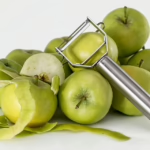







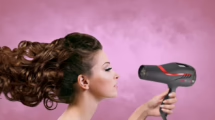

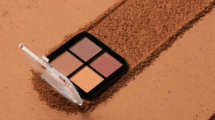


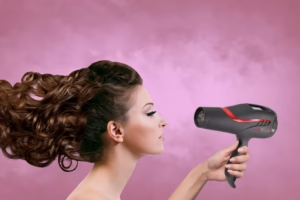


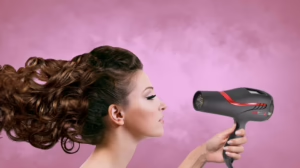






Add Comment